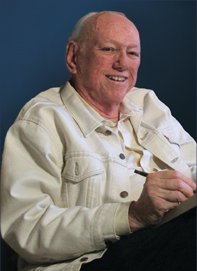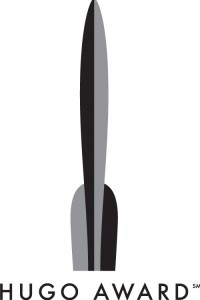William F. Nolan: Last Man Standing
 William Francis Nolan was born March 6, 1928 in Kansas City, MO, and moved with his family to California when he was 19. He trained as a visual artist, and attended the Kansas City Art Institute from 1946-47, San Diego State College from ’47-’48, and Los Angeles City College in 1953. He married Marilyn Seal (now Cameron Nolan) in 1970.
William Francis Nolan was born March 6, 1928 in Kansas City, MO, and moved with his family to California when he was 19. He trained as a visual artist, and attended the Kansas City Art Institute from 1946-47, San Diego State College from ’47-’48, and Los Angeles City College in 1953. He married Marilyn Seal (now Cameron Nolan) in 1970.
Nolan worked as a writer and designer of greeting cards for Hallmark, a painter of murals, an aircraft assistant, and at various other jobs in the ’40s and ’50s. In 1956, he became a freelance writer. In addition to his fiction and TV writing, Nolan has been an editor for and contributor to auto and racing magazines, and a book reviewer.
Nolan became active in SF fandom in the ’50s, helping found the San Diego Science Fantasy Society, contributing substantially to the fanzine Rhodomagnetic Digest, publishing and editing Ray Bradbury Review, working with ‘‘The Group,’’ a coterie of up-and-coming young writers which included Bradbury, Richard Matheson, Charles Beaumont, John Tomerlin, George Clayton Johnson and others, and later served as Managing Editor of the first three issues of Gamma (1963-1964).
His first SF story was ‘‘The Joy of Living’’ (1954), and he published short fiction and criticism frequently throughout the following decades under his own name and multiple pseudonyms, including Frank Anmar, and F. E. Edwards. ‘‘Saturday’s Shadow’’ (1979) was a World Fantasy Award finalist. Some of Nolan’s stories were collected in his first book-length publication, Impact-20 (1966). Other collections include Alien Horizons (1974), Wonderworlds (1977), Things beyond Midnight (1984), Blood Sky (1991), World Fantasy Award and International Horror Guild Award finalist Dark Universe (2001), Nightworlds (2001), Have You Seen the Wind? (2003), Wild Galaxy (2005), Ill Met by Moonlight (2005), and Nightshadows (2007).
His first novel was Logan’s Run (1967, with George Clayton Johnson), still the work for which he is most well known. The book became a Nebula Award-nominated film in 1976, and spawned a television series. There is currently a comic series set in that world (Logan’s Run: Last Day, with input from Nolan), and plans are in place to make a new feature film based on the work. Nolan has written several sequels, namely Logan’s World (1977), Logan’s Search (1980), the novella Logan’s Return (2001). Nolan also has other sequels in development utilizing the Logan universe and characters.
His other major property is the Sam Space series, an SF/hard boiled homage to Dashiell Hammett’s Sam Spade. Books include Edgar Award winner Space for Hire (1971), Look Out for Space (1985), and the collection Seven for Space (2008). He also wrote the horror novel Helltracks (1991), three longer stories about paranormal investigator David Kincaid collected recently as Kincaid: A Paranormal Casebook (2011), and numerous crime and mystery titles, including what Nolan considers his best novel, The Marble Orchard (1996).
Nolan has been a prolific anthologist, editing numerous reprint volumes and some originals, notably The Future is Now (1970), The Bradbury Chronicles: Stories in Honor of Ray Bradbury (1991, with Martin H. Greenberg), The Bleeding Edge: Dark Barriers, Dark Frontiers (2010, with writer/editor Jason V Brock), and The Devil’s Coattails: More Dispatches from the Dark Frontier (2011, also with Brock).
Nolan has written many books of non-fiction about authors and writing, notably The Ray Bradbury Companion (1975), Hammett: A Life on the Edge (1983), The Work of Charles Beaumont (1986), the IPA Silver Award winner Let’s Get Creative! (2007), and books on other subjects, including car racing and film. He has also written for the movie industry (such as Burnt Offerings, with Director Dan Curtis), and, more extensively, for television (including The Turn of the Screw, and Trilogy of Terror, with his good friend Richard Matheson).
Nolan’s many awards include a Living Legend Award from the International Horror Guild (2002); a SFWA Author Emeritus Award (2006); the HWA Bram Stoker Award for Lifetime Achievement (2010).
Website: WILLIAMFNOLAN.COM
Excerpts from the interview:
‘‘After I moved to California, I helped form the San Diego Science Fantasy Society and attended the Los Angeles Science Fiction Society meetings on several occasions as well. In 1952, I put out my own chapbook, Ray Bradbury Review. I had met Ray in 1950, he later introduced me to Forrest J Ackerman (who became my first agent); Ackerman in turn introduced me to Charles Beaumont, who became my best friend for ten years. I made my first sale in 1954, to If: Worlds of SF, and that was the beginning of my career.
‘‘The group back then – Beaumont, Matheson, Bradbury, myself, and a few others – has become an iconic thing, but we were really just a bunch of guys trying to pay the rent! We read stories out loud to one other, gave each other support, talked about editorial matters, and so on, but we didn’t consider ourselves any special ‘group’ a la Hemingway, Fitzgerald, Picasso, and Gertrude Stein in 1920s Paris, or even the Beats. And yet it turns out that we actually changed the face of science fiction and dark fantasy; we were instrumental in a major science fiction/fantasy movement, which we inaugurated without realizing we were doing it.”
…
 ‘‘Here’s what led up to the book Logan’s Run: In 1963, Beaumont was teaching one of the first science fiction classes in the country, at the UCLA Extension, and he would have guest lecturers come to his classes and talk about their work. He asked me to talk about Social Fiction vs. Science Fiction. I said, ‘Sure.’ On the freeway, driving down toward UCLA, I thought, ‘Gee, I don’t have a single idea! Wait a minute – what if there’s a future society, overpopulated, in which the society decrees that you have to die on your 40th birthday in order to maintain population control?’ When I got to the class, I said that in social fiction that story would just be a mid-life crisis: a guy running off with his secretary or a showgirl at the age of 40. In science fiction, turning 40 can mean being pursued by a relentless future society that demands your death. Instead of ‘life begins at 40,’ it ends!
‘‘Here’s what led up to the book Logan’s Run: In 1963, Beaumont was teaching one of the first science fiction classes in the country, at the UCLA Extension, and he would have guest lecturers come to his classes and talk about their work. He asked me to talk about Social Fiction vs. Science Fiction. I said, ‘Sure.’ On the freeway, driving down toward UCLA, I thought, ‘Gee, I don’t have a single idea! Wait a minute – what if there’s a future society, overpopulated, in which the society decrees that you have to die on your 40th birthday in order to maintain population control?’ When I got to the class, I said that in social fiction that story would just be a mid-life crisis: a guy running off with his secretary or a showgirl at the age of 40. In science fiction, turning 40 can mean being pursued by a relentless future society that demands your death. Instead of ‘life begins at 40,’ it ends!
‘‘I thought that would be the last of it. Then I became intrigued by the idea, so I made a little note about future cops – killer men that hunt you down if you don’t turn yourself in at the age of 40. I brought the idea to George Clayton Johnson, who had done a few Twilight Zone classics and other scripts, but never a novel. Of course, I had never done a novel either. George said, ‘We ought to do this as a screenplay.’ I said, ‘Wait a minute. Why don’t we do it as a novel first and then a screenplay? We’ll get a better chance to sell it to the films and make double money.’ We agreed to make notes and meet again in about a year to write it.
‘‘So we met a year later in a Malibu motel and spent 21 days there. He would go home at night and I would stay at the motel, because he was married at the time and I wasn’t. We ‘ran with Logan,’ as I called it. We wrote in a very fast style, did very fast plotting – everything was fast! We would spell each other at the typewriter. 21 days later, we had the draft, and I took it up to San Francisco on my own, where I did all the revision and polishing, brought it back, and that’s when George made a few corrections. We sent it out to three publishers at once. Dial Press bought it. The next thing we know, we have a couple of movie bids.
‘‘We told MGM, ‘We want a hundred thousand dollars for this.’ You’ve got to remember, this was 1967, and $100,000 was equivalent to like a million dollars today. MGM said, ‘No, we’ll give you $60,000.’ We sweated it out over the weekend, because $60,000 was a lot of money, and neither of us had any money then. But we stuck to our guns, had our agent call MGM, and they said ‘OK.’ They paid us the $100,000, and eventually the film was released in 1976, changing my life! Now I’m William F. ‘Logan’s Run’ Nolan.
‘‘The book sold 100,000 copies or so in the Dell edition, 850,000 copies in a Bantam paperback, and did very well in 10 or 15 countries overseas. But I don’t think it would have become a bestseller without the amount of money MGM put into promotion, and the movie helped a lot. Now Warner Brothers is remaking it, for release in 2014. So Logan is still running, after all these years!”
…
‘‘Movie adaptations are never, ever correct – except for The Maltese Falcon. That’s because John Huston’s version is just Dashiell Hammett’s book set up in screenplay form, but it’s the only adaptation I’ve found that I could respect. . . For example, the first half of Logan’s Run wasn’t too bad, but the film is an utter failure for the most part. Thank God Warner Brothers is remaking it, and they tell me they’re going back to the novel as the source. We shall see. I’ll believe it when it happens. I worked in Hollywood from the age of about 30 to 65, and the place is crazy. No wonder people become alcoholics and drug addicts! The only way I could stay sane was to work on my prose and poetry, jump from one thing to another – keep fresh, keep active.”



 Read the complete interview, and biographical profile, in the June 2012 issue of Locus Magazine.
Read the complete interview, and biographical profile, in the June 2012 issue of Locus Magazine.



Pingback:William F. Nolan: Last Man Standing | William F. Nolan
Pingback:WILLIAM F. NOLAN INTERVIEW IN JUNE ISSUE OF LOCUS : Dark Discoveries Publications
Pingback:Locus: Last Man Standing – William F. Nolan